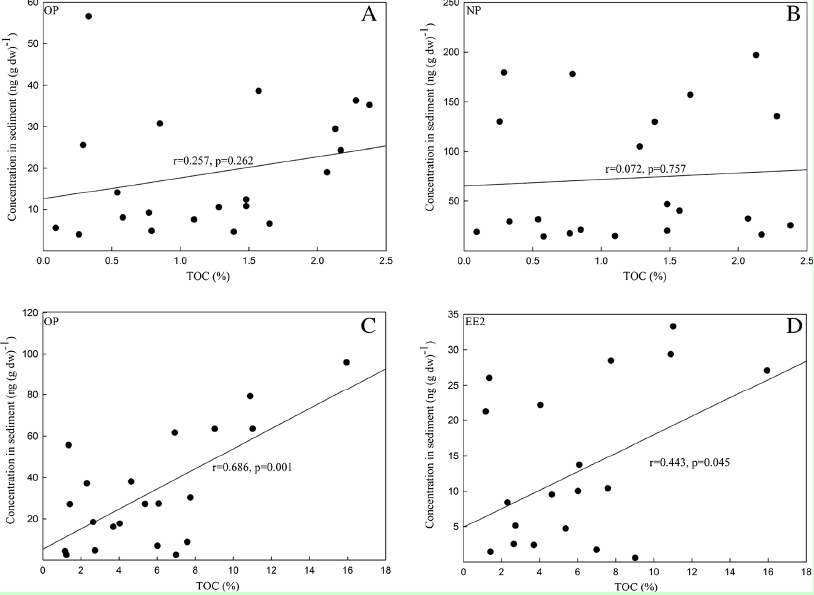Name:WANG Jun
Tell:
Email:wangjun@wbgcas.cn
Organization:Wuhan Botanical Garden
Researchers Uncover the Occurrence and Distribution of EDCs in the Honghu Lake and East Dongting Lake along the Central Yangtze River
2015-07-29
Lakes along the Yangtze River in China play a very important role as drinking, agricultural and industrial water sources, and aquaculture site. However, some lakes by the Central Yangtze River have lost their linkages, which resulted in serious wetland ecosystem degrading, great biodiversity loss, eutrophication, aquatic resources depletion, and so on. East Dongting Lake and Honghu Lake wereYangtze-connected and Yangtze-isolated lakes, respectively, both of them were threatened by pollution.
As toxic organic pollutants, endocrine-disrupting compounds (EDCs) have gained increasing attention due to their impact to reproductive organs, thyroid gland, and brain tissues, and the association with cancer development in humans. The EDCs in water environment pose threats to human health via drinking and/or food chain.
Prof. WANG Jun and Dr. YANG Yuyi from Wuhan Botanical Garden investigated the occurrence and distribution of 8 EDCs in the East Dongting Lake and Honghu Lake, including: bisphenol A (BPA), 4-nonylphenol (NP), 4-octylphenol (OP), 17α-ethinylestradiol (EE2), estrone (E1), 17α-estradiol (αE2), 17β-estradiol (βE2), and estriol (E3). 21 surface water and 21 sediment samples were collected in each lake, and the targeted EDCs in these samples were targeted by liquid chromatography-mass spectrometry using atmospheric pressure chemical ionization (LC-MS, Thermo Fisher Scientific).
The total concentrations of eight EDCs in surface water of Honghu Lake ranged from 47.60 to 419.82 ng L?1 with a mean value of 225.65 ng L?1, which were significantly higher than those in East Dongting Lake (43.52–394.21, mean value of 153.03 ng L?1). The total concentrations of eight EDCs in Honghu Lake sediments were in the range 202.71–635.36 ng g?1dw with a mean value of 371.90 ng g?1dw, which were significantly higher than those in the East Dongting Lake sediments (70.01–464.63 ng g?1dw, mean value of 238.42 ng g?1dw). For the two lakes, the concentration of NP, OP, and BPA in the surface water and sediment samples were the main EDCs, accounting for more than 68%.
In further, the research team figured out the relationship between EDCs levels in surface water and sediments, and total organic carbon (TOC) and EDCs levels in sediments. No correlation were found between EDCs in water and sediments in two lakes (P>0.15). OP and NP levels in sediments of the East Dongting Lake had no correlation with the TOC content, whereas OP and EE2 in sediments of Honghu Lake had significant positive correlation relationship with the TOC content.
Spatial distribution of EDCs showed that EDCs in lake outlet of Honghu Lake were comparable to those in the main lake, whereas the EDCs in lake outlet of East Dongting Lake were lower than those in the main lake, which may be caused by the TOC and difference of outlet water exchange between lake and Yangtze River in the two lakes.
EDC estrogenicity Estimation revealed EDCs’ potential biological effect on fish in Honghu Lake and East Dongting Lake.
Results entitled “Occurrence and distribution of endocrine-disrupting compounds in the Honghu Lake and East Dongting Lake along the Central Yangtze River, China” were published in Environmental Science and Pollution Research.

The correlation relationships between EDCs and TOC in sediments of East Dongting Lake (a, b) and Honghu Lake (c, d) (Image by YANG Yuyi)